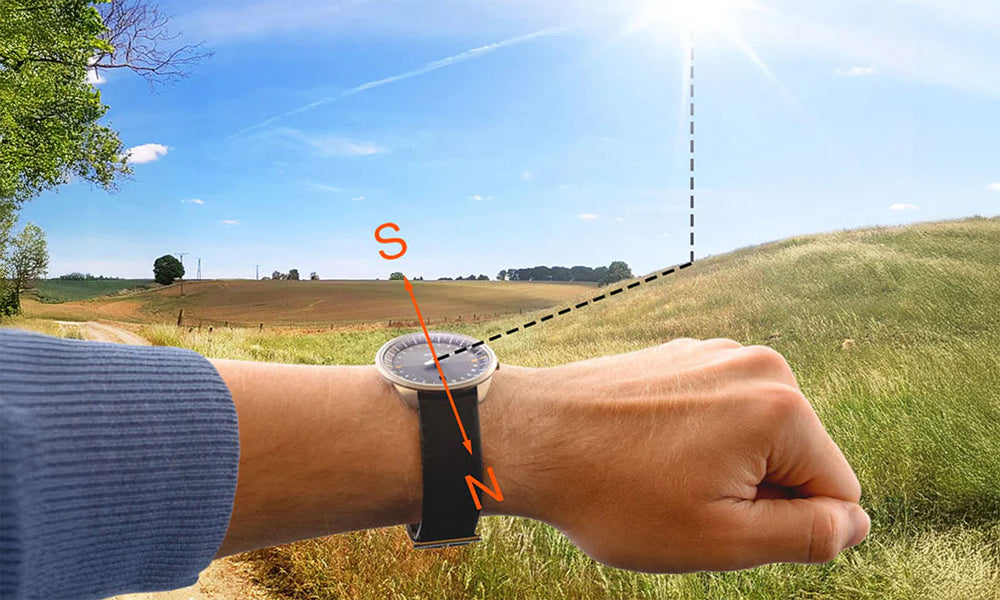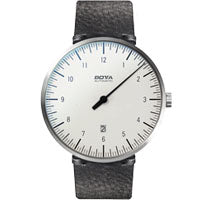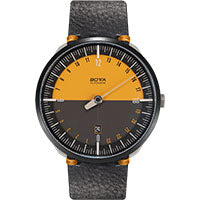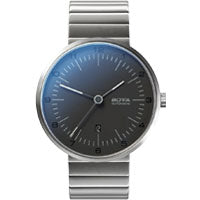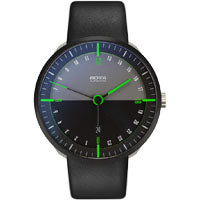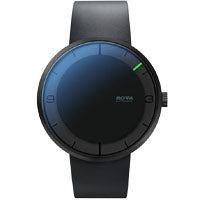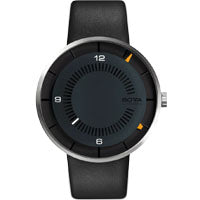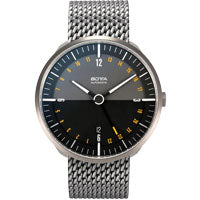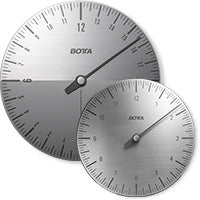The philosophy of a 24-hour watch
Experience time holistically
Imagine seeing your entire day at a glance – from sunrise to sunset. Our 24-hour watches follow the natural rhythm of time and make it intuitive again. Unlike conventional 12-hour watches, BOTTA’s 24-hour models reflect the true structure of the day: 24 hours – logical, clear, and confident.
With their distinctive scale and minimalist design, BOTTA 24-hour watches are more than timepieces – they are an expression of a conscious lifestyle. Every glance at the dial conveys calm and clarity, shifting focus to what truly matters and inviting reflection on your personal relationship with time.
Wearing a 24-hour watch is a statement of individuality and clarity – and it’s sure to spark interesting conversations. You experience time as a natural flow, always keep an overview of your day, and at the same time enjoy the moment. BOTTA 24-hour watches stand for a unique kind of logic, for precision, and for a mindful, relaxed approach to our most valuable resource: time.

The 24h wristwatch
The most natural form of time display.
At first glance, the 24-hour watch seems unusual because we are accustomed to the abstracted form of the 12-hour scale. At second glance, however, 24-hour displays reveal their convincing logic.
After all, our sense of time is guided by the position of the sun. Not least, our biological rhythm is aligned with the bright and dark phases of the day. BOTTA 24-hour watches therefore divide the day on their dial into a light upper half for daytime and a darker lower half for nighttime. The 0-hour position is located at the very bottom of the dial, marked by a fine line indicating the date change. Opposite, at the highest point of the dial, is the 12 o’clock position – corresponding to the sun’s highest point at noon.
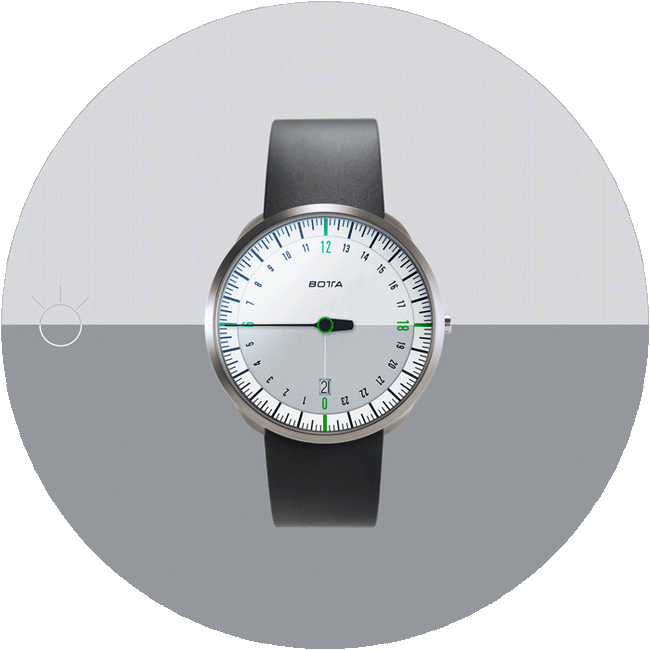
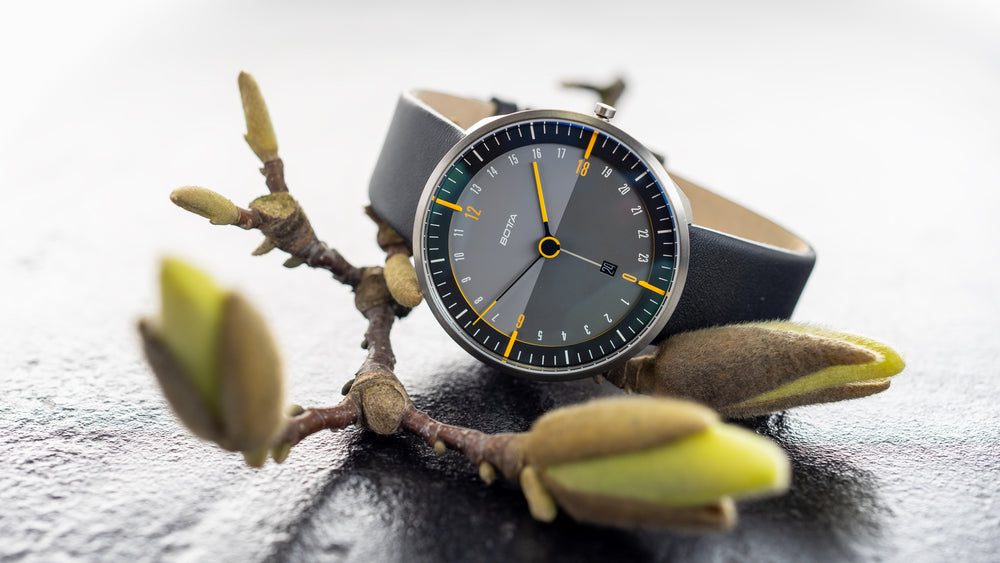
24-hour watches embody a slower pace of life.
BOTTA’s 24-hour watches follow a natural logic of time display, offering their wearer a new and positive sense of time. Their calm presence on the wrist provides a soothing counterbalance to the often tightly scheduled routines of everyday life.
The gently decelerated movement of the hand encourages a more relaxed perception of the day and conveys confidence in dealing with one’s own time. In this way, they enable a return to a natural and serene experience of time.
24-hour watches – a brief history of time
Even in ancient times, people felt the need to measure time. However, a universally standardized way of displaying time has only existed for a relatively short period. In earlier days, timekeeping was closely based on the position of the sun. Depending on the region, the day either began at sunrise (Babylonian / Greek timekeeping) or at sunset (Italian / Bohemian timekeeping). In Egypt, the day was divided for the first time into 24 units of roughly equal length. During the day, time was read from the position of the sun, at night from the stars. As a result, for a long time, only 24-hour clocks existed. Because they displayed the full day, 24-hour clocks were also referred to as “Great Clocks.”
For reasons of technical feasibility, however, pocket watches were usually made as 12-hour watches, dividing the day into two halves. This abstraction gave rise to the form of time display that is still the most widespread today. It was not until 1345 that the 24 hours of the day were subdivided into the smaller units of minutes and seconds. Minute and second hands, on the other hand, were only introduced in 1537. Before that, all watches had just a single hand.
Today, the ISO 8601 standard regulates the division of the day into 24 equinoctial (equal day and night) hours and defines timekeeping worldwide. Interestingly, while the 12-hour display still dominates, in spoken language the 24-hour system is often used (1 p.m., 2 p.m., and so on).
BOTTA 24h Watches: Your Entire Day at a Glance
We rarely make ourselves aware of it, but time is an astronomical quantity. Our day is defined as the period it takes the Earth to complete one rotation on its own axis. Thus, the day has always been a precisely defined unit of time.
However, even thousands of years ago, people sought to divide this fixed unit into smaller segments in order to plan and use the day more effectively.
After centuries of regional variations in timekeeping, the worldwide division of a day into 24 equal units—called hours—gradually established itself in the 14th century AD. Early tower clocks, for example, were often 24-hour clocks. Over time, however, for reasons of simpler technical construction, the 12-hour scale became the standard for such large clocks and later also for wristwatches.
BOTTA 24-hour watches, by contrast, continue to follow the astronomical alignment of the Earth and the Sun. They embrace this logical form of time display by mapping an entire day on the 24-hour dial of the watch. At BOTTA, we call this format—with 0 o’clock positioned at the bottom and 12 o’clock at the top—“sun-synchronous” display: consistently logical and directly analogous to the sun’s course throughout the day.
24 Stunden Uhr TRES 24
TRES 24 – The 24-Hour Watch: Precise to the Second
The TRES 24 by BOTTA combines the consistently logical, sun-synchronous time display of a 24-hour watch with the precise time indication of a three-hand watch. It offers a clear overview of the entire day, with its dial divided into a bright daytime half and a darker nighttime half.
Thanks to its three hands, the time can be read to the minute or even the second—despite the 24-hour scale. A particular design highlight is the TRES 24’s C-second hand, a new type of seconds display developed by BOTTA. Unlike conventional second hands, it presents the passage of seconds in a much calmer and more relaxed way. The TRES 24 is therefore an unusual yet practical watch for everyday life—ideal for discerning enthusiasts of extraordinary products who still value precise timekeeping.
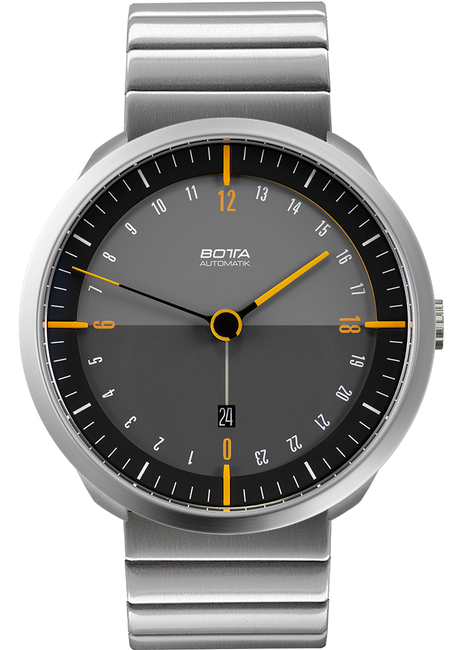
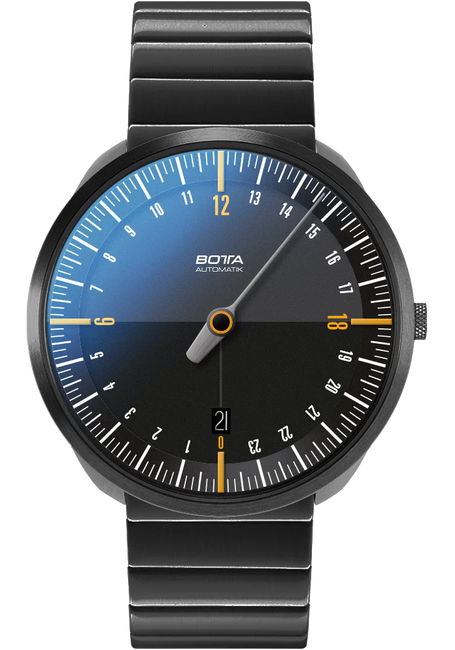
24 Stunden Uhr UNO 24
UNO 24 – 24 Hours of Uncommon Logic
The UNO 24 by BOTTA simplifies the display of time even more consistently: as a 24-hour single-hand watch, it shows the entire day at a glance. Uniquely, it combines the 24-hour display with the single-hand principle. Its hand not only symbolizes the position of the sun; its rotation speed also exactly matches the speed of the Earth’s rotation around its own axis. Every moment of the day has a unique position on the dial. The ambiguity of a 12-hour watch (e.g., 03:00 = 15:00) does not exist on a 24-hour watch. Just like our 24-hour wall clock, the “day on the dial” passes in the same way as a natural day.
At 6 a.m., the hand crosses the horizon into the bright half of the day, stands at its zenith at 12 noon, moves into the night half at 6 p.m., and with the crossing of the date line at midnight, begins its journey anew. The change of the date display takes place precisely at the moment when the hand passes over the date line and the date window.
UNO 24 – The Wristwatch that Doubles as a Compass
Since the hand of the UNO 24 runs in sync with the sun, this 24-hour wristwatch also serves as an exact compass – anywhere in the world. Its use is simple and reliable in both hemispheres, as the watch is directly oriented to the position of the sun. This makes the UNO 24’s close connection to nature especially tangible.
A clear and easy-to-follow guide on how to use it as a compass can be found here.
